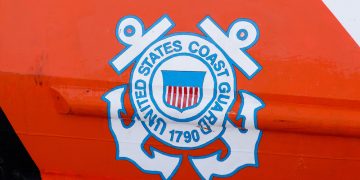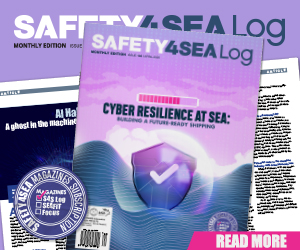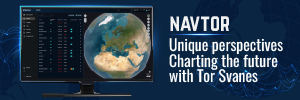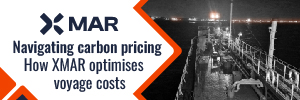Japan P&I Club’s Capt. Toru Asai, General Manager of Loss Prevention and Ship Inspection Department, presents an essential guide to high-risk onboard tasks that pose serious threats to seafarer safety.
Works onboard that is likely to cause personal injury
Occupational health and safety risks onboard would sometimes lead to death. Appropriate control measures should be implemented to minimise exposure to hazards that may cause injury, disease or death. Risks onboard must be identified and evaluated. And preventive measures must be taken to remove or minimise those risks to protect seafarers. We introduce the works that often result in personal injury. The risks of each work should be verified.
Enclosed space entry
What is an enclosed space:
- not designed for continuous worker occupancy;
- limited openings for entry and exit;
- inadequate ventilation.
The atmosphere in any enclosed space may contain toxic or flammable gases, or be deficient in oxygen. It may endanger the life of any person entering that space. Gases are often invisible and odorless.The dangers may not be readily apparent and, following testing, atmospheres can change. In addition, isolated areas with very low oxygen content or small concentrations of toxic gases may exist.
It is essential that all necessary precautions are taken, including a risk assessment, the completion of a permit to work and frequent testing of the atmosphere when the space is entered, according to the schedule set out in the risk assessment.
Ships’ holds have open tops and are not considered as enclosed spaces. But, due to the nature of the cargo, the hold may become a dangerous space. If in any doubt, any such space should be regarded as potentially enclosed and appropriate action taken.
A rescue plan/equipment should be in place for every entry. In case of an emergency, no one should enter any enclosed space to attempt a rescue without taking suitable precautions for their own safety.
Hot work
“Hot work in places other than the workshop” should be the subject of a permit to work(welding, flame cutting, angle grinding or other hot work).
- No combustible solids, liquids or gases at, below or adjacent to the area of hot work.
- Hot work should never be undertaken on surfaces covered with grease, oil or other flammable or combustible materials.
- Combustible materials and dunnage should be moved to a safe distance before commencing operations.
- Such places should also be free of materials that could release a flammable substance if disturbed.
- When work is being done close to or at bulkheads, decks or deckheads, the far side of the divisions should be checked for materials and substances that may ignite, and for cables, pipelines or other services that may be affected by the heat.
- Cargo tanks, fuel tanks, cargo holds, pipelines, pumps and other spaces that have contained flammable substances should be certified as being free of flammable gases before any repair work is commenced.
- The gas testing should include the testing of adjacent spaces, double bottoms and cofferdams.
- Further gas tests should be carried out at regular intervals and before hot work is recommenced following any suspension of the work.
- In case of tankers and similar ships, all tanks, cargo pumps and pipelines should be thoroughly cleaned and particular care taken with the draining and cleaning of pipelines that cannot be directly flushed using the ship’s pumps.
- Hot work should be properly supervised and kept under regular observation.
- Suitable fire extinguishers should be kept at hand ready for use during the operation.
- A person with a suitable extinguisher should be stationed to keep watch on areas that may be affected that are not visible to the seafarer doing the work.
- In view of the risk of delayed fires resulting from the hot work, frequent checks should be made for at least two hours after the work has stopped.
Work at height
Any work in a location where there is a risk of falling may be regarded as “work at height”.
- Work on ladders, staging and scaffolding.
- Work inside a tank, near an opening (hatch), on a fixed stairway.
Work should not be carried out at height if there is a reasonably practicable alternative to doing so. The Company must ensure that such work is properly planned, appropriately supervised and carried out in as safe a manner as is reasonably practicable.
Planning should include a risk assessment. This may include consideration of potential risks from falling objects or fragile surfaces and planning for emergency situations.
Personnel working at a height may not be able to give their full attention to the job and, at the same time, guard themselves against falling. Proper precautions should, therefore, always be taken to ensure personal safety when work has to be done at height or when working outboard. It must be remembered that the movement of a ship in a seaway and poor weather conditions, even when alongside, will add to the hazards involved in work of this type. A stage, ladder, scaffolding, bosun’s chair or a secured scaffold tower should be used when work is to be done beyond normal reach. Any equipment being used should be inspected prior to use and in a good state of repair.
Safety measures:
- A safety harness with a lifeline or other arresting device at all times.
- A safety net should be rigged where necessary and appropriate.
- Where work is done overside, a working lifejacket (personal flotation device) or buoyancy garments should be worn and a lifebuoy with sufficient line attached should be kept ready for immediate use.
- Personnel should be under observation from a person on deck.
Working overside
Where a work activity involves lifting from deck or overside (e.g. raising of pilot ladders), guidance on body posture and technique needs to be followed to limit musculoskeletal injury. Adequate additional manual help and/or appropriate means should be used wherever possible and risks assessed. Where manual handling is unavoidable, the ladder should be lifted from no lower than deck level in stages rather than trying to lift from overside.
The dangers associated with this work activity should be risk assessed as working overside.
Requiring:
- Permit to work
- Use of control measures: safety line, fall prevention device, safety harness, lifejackets, life buoy with rope.
Electrical work
The risks of electric shock are greater on board than ashore because high humidity and high temperature (including sweating) reduce the contact resistance of the body. Severe and even fatal shocks may be caused at voltages of 60V or lower. It should also be borne in mind that cuts and abrasions significantly reduce skin resistance.
Lock out, tag out (LOTO) procedure should be used as a safety procedure to ensure that energy and power sources are properly isolated, shut off and not able to be started up again prior to the completion of maintenance or repair work.The isolated power sources are locked and a tag is placed on the lock identifying the worker who placed it.
Work on or near live equipment should be avoided. But, when it is essential for the safety of the ship or for testing purposes, the following precautions should be taken:
- A second person, who should be electrically competent and trained in first aid, should continually attend.
- The working position adopted should be safe and secure to avoid accidental contact with the live parts. Insulated gloves should be worn where practicable.
- Contact with the deck, particularly if it is wet, should be avoided. Footwear may not give adequate insulation if it is damp or has metal studs or rivets. The use of a dry insulating mat at all times is recommended.
- Contact with bare metal should be avoided. A hand-to-hand shock is especially dangerous. To minimize the risk of a second contact should the working hand accidentally touch a live part, one hand should be kept in a trouser pocket whenever practicable.
- Wrist watches, metal identity bracelets and rings should be removed. They provide lowresistance contacts with the skin. Metal fittings on clothing or footwear are also dangerous.
No work shall be carried out on high-voltage equipment (designed to operate at a nominal system voltage in excess of 1000V) unless an agreed switching plan has been developed and implemented so that the equipment/installations are:
- dead;
- isolated and all practicable steps have been taken to lock off live conductors, voltage transformers (except where the connections are bolted) and dead conductors that may become live;
- earthed at all points of disconnection of high-voltage supply and caution notices attached in English and any other working language of the vessel; and released for work by the issue of a permit to work or a sanction for test.
High pressure systems
When the maintenance of hydraulic /pneumatic system is undertaken, any pressure in the system should be released. The part being worked upon should be isolated from the power source and a warning notice displayed by the isolating valve, which should be locked.
Example:
- High pressure hydraulic system for cargo pumps on chemical tankers
- Air purge type level gauge for cargo and ballast tanks
Precautions should be taken against the possibility of residual pressure being released when unions or joints are broken. As vapours from hydraulic oil would be flammable, naked lights should be kept away from hydraulic system for the service.
Working on deck during adverse weather
Working on deck during adverse weather should be authorised by the master and the bridge watch should be informed. A risk assessment should be undertaken, and a permit to work for work on deck in adverse weather completed.
Safety measures for any seafarers required to go on deck during adverse weather:
- Lifelines should be rigged in appropriate locations on deck
- Lifejacket suitable for working
- Safety harness (attached to lifelines)
- Waterproof personal protective equipment (full head protection, water-resistant UHF radio, head-mounted torches)
- Work in pairs or in teams under the command of a competent person.
- Maintain visible communication or other continuous communication from the bridge.
Lifting operations
Every lifting operation must be:
- subject to risk assessment;
- properly planned;
- appropriately supervised; and
- carried out in a safe manner.
Consideration should be given to the effects of weather conditions on all lifting operations, whether inside the ship or outside on deck, and such operations should be suspended before conditions deteriorate to the extent that lifting becomes dangerous.
- No person should be lifted except where the equipment is designed or specially adapted and equipped for that purpose, or for rescue or in emergencies.
- Contact with bare ropes or warps with moving parts of the equipment should be minimised by the installation of appropriate protective devices.
- Under no circumstances should personnel stand on, stand below or pass beneath a load that is being lifted. Loads should not be lifted over any access way.
- All loads should be properly slung and properly attached to lifting gear, and all gear properly attached to equipment.
- Wire ropes should be regularly inspected and treated with suitable lubricants. These should be thoroughly applied so as to prevent internal corrosion as well as corrosion on the outside. The ropes should never be allowed to dry out.
Mooring operations
When mooring operations are taking place, all seafarers should be adequately briefed on the mooring configurations, including any limitations of the mooring equipment, and correctly dressed in appropriate personal protective equipment.
Safety measures during mooring operations:
- Fully briefed on the mooring / unmooring plan.
- A responsible officer should be in charge of each station and have a clear line of sight to all lines and members of the mooring parties.
- A suitable means of communication must be established between the responsible officers and the vessel’s bridge team.
The entire area should be considered dangerous in the event of snap-back of a line under tension. A line or lines may break at any point, and may part at more than one point, increasing the area of risk from snap-back. All crew working on a mooring deck should be made aware of this with clear visible signage.
- Personnel should not stand in a bight of rope or wire.
- Operation of winches should be undertaken by competent seafarers to ensure that excessive loads do not arise on moorings.
- Warping a vessel along a berth involves risk and mooring lines should only be used to warp a vessel along a berth following a risk assessment.
- The risk assessment should include consideration of environmental conditions, the vessel’s size, careful regard to the type and length of rope used, and the capability of the shoreside mooring arrangements.
- Toolbox talk should precede operations with maintenance of good communications with all participants throughout.



































































